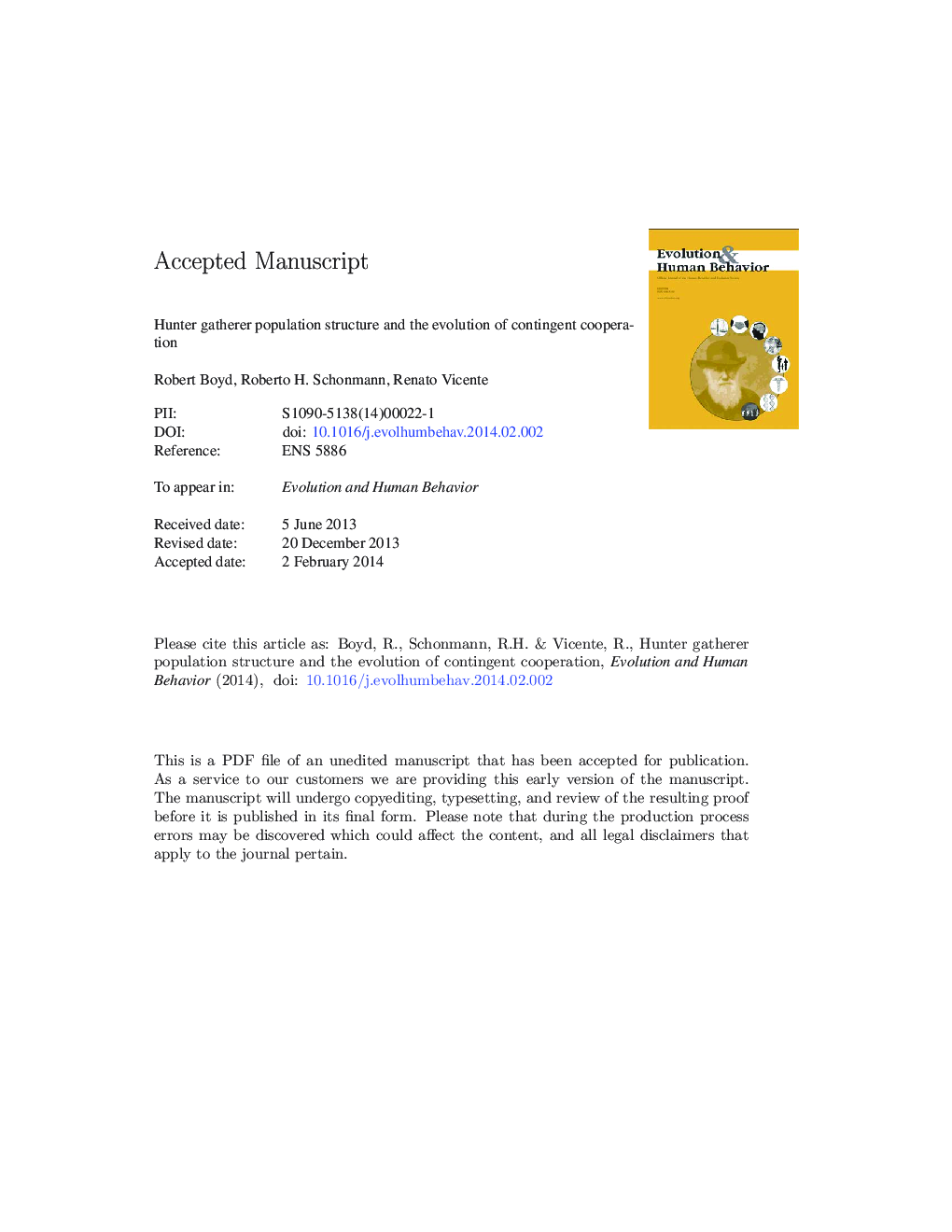| Article ID | Journal | Published Year | Pages | File Type |
|---|---|---|---|---|
| 10464068 | Evolution and Human Behavior | 2014 | 21 Pages |
Abstract
Unlike other vertebrates, humans cooperate in large groups with unrelated individuals. Many authors have argued that the evolution of such cooperation has resulted from reciprocity and other forms of contingent cooperation. This argument is not well supported by existing theory. The theory of contingent cooperation in pairs is well developed: reciprocating strategies are stable when common, and can increase when rare as long as population structure leads to modest levels of relatedness. In larger groups, however, it is not clear whether contingent cooperation can increase when rare. Existing work suggests that contingent strategies cannot increase unless relatedness is high, but depends on unrealistic assumptions about the effects of population structure. Here we develop and analyze a model incorporating a two level population structure that captures important features of human hunter-gatherer societies. This model suggests that previous work underestimates the range of conditions under which contingent cooperation can evolve, but also predicts that cooperation will not evolve unless (1) social groups are small, and (2) the relatedness within ethnolinguistic groups is at the high end of the range of empirical estimates.
Related Topics
Life Sciences
Agricultural and Biological Sciences
Ecology, Evolution, Behavior and Systematics
Authors
Robert Boyd, Roberto H. Schonmann, Renato Vicente,
